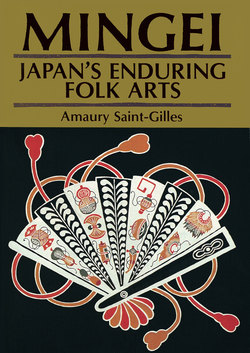Читать книгу Mingei: Japan's Enduring Folk Arts - Amaury Saint-Gilles - Страница 6
На сайте Литреса книга снята с продажи.
ОглавлениеPREFACE
The “arts of the people” of Japan are a living, growing tradition that is a continuum of change over hundreds and even thousands of years in the case of pottery making. They are the distillation of a culture reflecting all the rich variations of the mountainous islands of Japan.
So complex is the rich variety of simple and abundant natural materials imaginatively used. Wood, bamboo, paper, straw, shell, lacquers, clay, metal, stone and other materials are transformed into delighfully charming objects of daily use. Often of a beauty unsurpassed in their quiet humility, they are useful and satisfying to the human spirit.
Mingei is a special transcultural word meaning “arts of the people.” Combining the Japanese words for people (min) and art (gei), it was coined fifty years ago by the late Dr. Yanagi Soetsu, revered scholar of Japan. His keen eye observed that many articles made by unknown craftsmen of pre-industrialized times were of a beauty seldom equaled by artists of modern societies. His questioning of why this might be revealed insight regarding the nature of beauty of things which are integrally related to life and born of a state of mind not attached to a conscious idea of beauty or ugliness. Rather, it is a unified expression with no division of head, heart and hand.
In his desire to communicate this profound insight, he, together with Hamada Shoji and Kawai Kanjiro, founded the Mingei Association and the first folk art museum in Japan, The Mingeikan in Tokyo.
Many of the contemporary craftsmen whom Yanagi nurtured were later designated as Living National Treasures of Japan. Their work possesses qualities of naturalness and beauty akin to that of the unknown craftsmen of prior days.
Thus the Japanese heritage of “arts of the people” was not lost to present and future generations as is happening throughout the industrialized world. Understanding of the world significance and influence of Mingei has been conveyed through the writings of both the late English potter Bernard Leach in “The Unknown Craftsman” and the late Hamada-Sensei.
In this book, MINGEI — Japan’s Enduring Folk Arts, we are introduced and reacquainted with “arts of the people” through the eyes of Amaury St-Gilles. He is a long time resident of Japan with the perspective of a sensitive and appreciative person who has come from another culture.
Dr. Martha Longenecker
Founding President & Director
Mingei International
Museum of World Folk Art
La Jolla, California
